5 Resources
On This Page
- Adaptive Equipment Evaluations at Riley Children’s Health
- Next Steps
- Physician Referral for Adaptive Car Seat Evaluation is Required
- Become a Child Passenger Safety Technician or Find a Nearby Course
- Safe Travel for All Children: Transporting Children with Special Health Care Needs
- Find a Tech/CPST
- AAP Car Seats: Product Listing for 2023
- The Right Seat: Fits the child, Fits the Vehicle, is used Correctly on Every Trip
- Automotive Safety Program
- National Center for The Safe Transportation of Children with Special Health Care Needs
Resources
Adaptive Equipment Evaluations at Riley Children’s Health
Occupational Therapists
- Wheelchairs
- Bath Chairs
- Activity Chairs
- Patient Lifts
- Medical Beds
- Adaptive Car Seats
Physical Therapists
- Standers
- Walkers
- Gait Trainers
Next Steps
- child passenger safety services in your facility and community
- Review your discharge policies and protocols
- Identify individuals to attend the NHTSA CPST training course
- Identify certified child passenger safety technicians and those who have taken the adaptive course (Safe Travel for All Children)
Physician Referral for Adaptive Car Seat Evaluation is Required
- Occupational Therapy Evaluation referral
- Indicate for adaptive car seat
- Fax referral to the Adaptive Equipment program at 317-944-1141
Become a Child Passenger Safety Technician or Find a Nearby Course
- cert.safekids.org
- Information about becoming a certified child passenger safety technician (CPST) and finding courses in your area
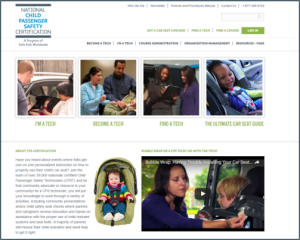
Safe Travel for All Children: Transporting Children with Special Health Care Needs
- Enrichment course on adaptive transportation developed by the National Center
- Two-day course
- MUST be a CPST to take course
- preventinjury.medicine.iu.edu
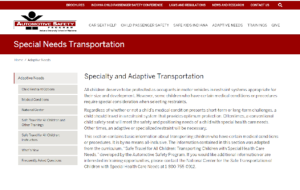
Find a Tech/CPST
- Find a Tech with STAC Training
- Enter location information
- Check ‘Special Needs’ in Extra Training
- CPSTs who have successfully completed the STAC course and signed the Release of Information can be found at cert.safekids.org
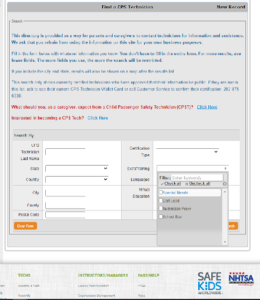
AAP Car Seats: Product Listing for 2023
- Conventional Car Seats – English and Spanish
- Rear-Facing Only, Convertible, All-in-One, Combination, Booster
- Descriptions, Installation techniques, and Safety information
- Price Ranges
- Rear-Facing Weight Limits and Height Limits
- Forward-Facing Weight Limits, Height Limits, and Age Limits
- Booster Weight Limits, Height Limits, and Age Limits
- Recline Options in Forward-Facing
- Travel Vests
- www.healthychildren.org/English/safety-prevention/on-the-go/pages/Car-Safety-Seats-Product-Listing.aspx
The Right Seat: Fits the child, Fits the Vehicle, is used Correctly on Every Trip
Always read car seat and vehicle manuals for specific directions. For questions call 1-800-KID-N-CAR.
Rear Facing Only and Convertible Seats
- Never in front of an airbag
- Rear face until child reaches upper weight or height limit of car seat set by manufacturer
- Harness snug and at or below shoulders
- Chest clip at armpit level
- Attach to vehicle with seat belt or lower anchors
- Don’t add anything extra to the seat
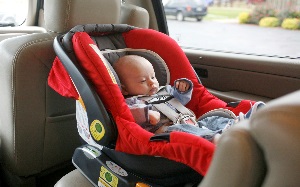
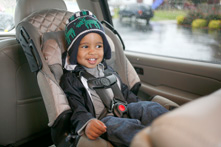
Forward Facing Seats with Harness
- Use 5-point harness to upper weight or height limit of seat
- Up to 40-90 pounds
- Harness snug and at or above shoulders
- Chest clip at armpit level
- Attach to vehicle with top tether strap and seat belt or lower anchors
- Check the side of the car seat for the highest weight allowed to use lower anchors
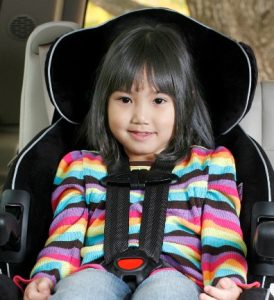
Booster Seats
- Until 4’ 9” and 8-12 years
- Always use lap/shoulder seat belt
- Never put shoulder belt behind back or under arm
- Use highback booster for vehicle seats without a headrest
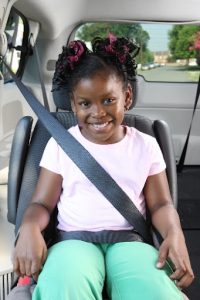
Adult-Size Seat Belts
- Back straight against vehicle seat and knees bent at seat edge
- Shoulder belt across chest not neck or throat
- Lap belt low and snug across upper thighs, not stomach
- Children younger than 13 should always ride in back seat
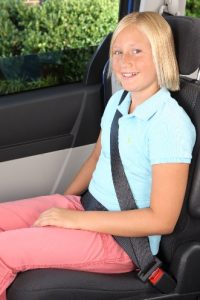
Automotive Safety Program
- Conventional Car Seat Information
- Car Seat Help
- CPST resources
- Indiana county listing of car seat inspection stations and car seat clinics
- preventinjury.medicine.iu.edu
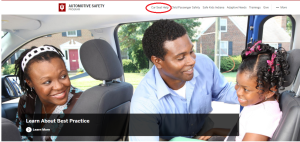
National Center for The Safe Transportation of Children with Special Health Care Needs
- Information on adaptive transportation:
- Medical conditions
- Restraint options
- Trainings
- Research
- Brochures
- 1-800-755-0912
- preventinjury.medicine.iu.edu/adaptive-needs/
